 Mysteries
Mysteries  Mysteries
Mysteries  History
History 10 Surprising Stories About the Texas Rangers
 Humans
Humans 10 Philosophers Who Were Driven Mad by Their Own Theories
 Miscellaneous
Miscellaneous 10 Video-Game-Worthy Weapons and Armors from History
 Weird Stuff
Weird Stuff 10 Psychics Who Accurately Predicted Wartime Events
 The Arts
The Arts 10 Pieces of Art Inspired by a Broken Heart
 Health
Health 10 Science Fiction-Sounding New Medical Treatments
 History
History 10 Surprising Facts About the Father of Submarine Warfare
 Space
Space Ten Astonishing New Insights into Alien Worlds
 Weird Stuff
Weird Stuff 10 Bizarre Summer Solstice Rituals Still Practiced Today
 Mysteries
Mysteries Top 10 Haunting Facts About the Ghost Ship MV Alta
 History
History 10 Surprising Stories About the Texas Rangers
 Humans
Humans 10 Philosophers Who Were Driven Mad by Their Own Theories
Who's Behind Listverse?

Jamie Frater
Head Editor
Jamie founded Listverse due to an insatiable desire to share fascinating, obscure, and bizarre facts. He has been a guest speaker on numerous national radio and television stations and is a five time published author.
More About Us Miscellaneous
Miscellaneous 10 Video-Game-Worthy Weapons and Armors from History
 Weird Stuff
Weird Stuff 10 Psychics Who Accurately Predicted Wartime Events
 The Arts
The Arts 10 Pieces of Art Inspired by a Broken Heart
 Health
Health 10 Science Fiction-Sounding New Medical Treatments
 History
History 10 Surprising Facts About the Father of Submarine Warfare
 Space
Space Ten Astonishing New Insights into Alien Worlds
 Weird Stuff
Weird Stuff 10 Bizarre Summer Solstice Rituals Still Practiced Today
Top 10 Historic Combat Vehicles That Changed The Face Of War
Throughout human history, the invention and manufacture of deadlier and more efficient weapons has helped turn the tide of war. Sometimes, the vehicles that took these weapons to the battlefields also secured important places in history due to their impact on how wars are fought.
Where would the atom bomb be if it had not been delivered, and how would naval warfare look without submarines? These vehicles completely changed the face of war by altering how it was planned and fought.
10 Creative Tank Designs That Never Caught On
10 Enola Gay

On August 6, 1945, 12 men boarded a Boeing B-29 Superfortress that was named Enola Gay after the mother of the pilot, Colonel Paul Tibbets Jr. He and his crew had a highly classified and dangerous mission: Deliver the payload dubbed “Little Boy” to their primary target, the Japanese city of Hiroshima.
On that fateful day, the aircraft didn’t disappoint. At 8:15 AM Hiroshima time, the bomb was dropped. It took the ordnance less than a minute to fall from the aircraft’s altitude of 9,470 meters (31,060 ft) to its designated detonation altitude of 600 meters (1,968 ft).[1]
The bomb destroyed nearly 70 percent of the city’s buildings and killed around 30 percent of its population. The Enola Gay’s crew felt the shock wave after traveling 18.5 kilometers (11.5 mi) away.
When the Enola Gay returned to its base in Tinian, the crew was welcomed with great fanfare. The colonel stepped off the plane and was awarded the Distinguished Service Cross immediately. The significance of deploying a new devastating weapon shaped the strategic and tactical planning for militaries and governments around the world.
Eventually, nuclear payloads were designed to fit atop their own launch vehicles. Still, history will never forget or forgive a plane that has become as infamous as it is famous. Decades after the war, the Enola Gay was restored and put on permanent display at the National Air and Space Museum in Washington, DC.
9 Turtle
In the early 17th century, Dutch inventor Cornelius van Drebel came up with a submersible craft, but another 150 years passed before a submarine was used in war. That chance came when American inventor David Bushnell decided that the best way to deliver underwater mines was to use a submarine. So he built one.
Bushnell constructed a 2.4-meter-long (8 ft) wooden craft that he christened the Turtle due to its overall shape. Mostly powered by hand, the Turtle was designed to accommodate a single operator and used lead ballast to maintain balance.[2]
When the American Revolutionary War broke out in 1775, mariner Ezra Lee took the craft donated to the war effort by Bushnell and used it in combat. Lee piloted the Turtle out to the HMS Eagle, a 64-gun vessel in New York Harbor. On September 7, 1776, he attempted to place a timed bomb onto the ship by drilling into the hull.
Although he remained undetected, he failed to pierce the iron sheathing on the hull. The bomb exploded near both vessels, but the Eagle remained afloat. Despite failing in its mission, the Turtle was a successful proof of concept. Continued advancements in submarine development remained a top priority for navies across the globe.
8 Little Willie
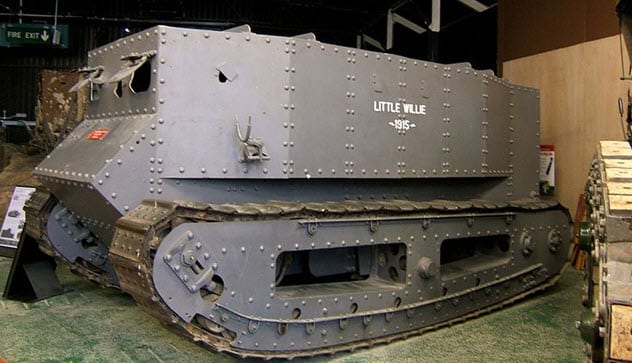
The news that the United States Marine Corps was retiring its fleet of tanks in 2020 helped drive the notion that the tank’s importance in modern warfare was at an end. Although that may be true in 2020, the tank changed how land warfare was conducted for more than a century.
It all began with a 14-ton behemoth, “Little Willie,” that was created by the British Army in 1915. Little Willie was slow, got stuck in the mud, and was something of a death trap. However, it was the first armored vehicle ever constructed, and it wasn’t long before upgrades made it combat-ready.
The second prototype, “Big Willie,” entered service in World War I during the First Battle of the Somme. This Mark I tank wasn’t as successful as the British would have liked, so the Mark IV took over as the main battle tank for the British Army. With that, the face of warfare changed forever.
The tank was created to combat the messy trench warfare killing millions across France, and it worked. Mark IVs were successful in capturing thousands of soldiers and enemy guns.
By World War II, the tank was the primary combat vehicle deployed by both the Allied and Axis powers. These vehicles continued to dominate land warfare throughout the 20th and early 21st centuries.[3]
7 USS Monitor
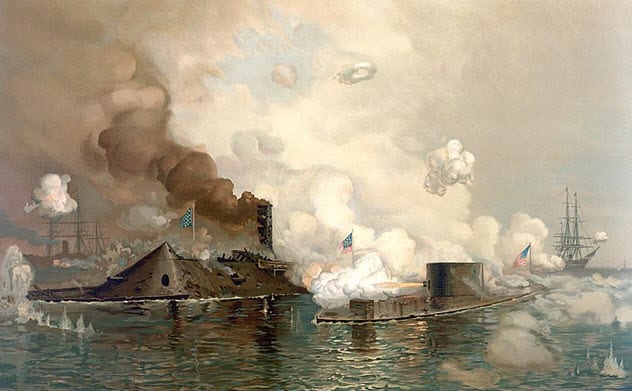
Naval warfare has been around for as long as people have taken to the water intending to kill one another. Although ship designs and capabilities have evolved over time, the wooden sailing ship was the dominant naval vessel for thousands of years.
In 1859, a new type of vessel emerged to end the age of wooden sailing ships. Ironclads were developed by the French and the British, but it wasn’t until the US Civil War that the first ironclads engaged in battle. The USS Monitor was commissioned in February 1862, and its innovations offered a new means of fighting on the water.[4]
Older sailing ships could be disabled by destroying their masts and sails, but the Monitor was steam-powered with no masts. In fact, the bulk of its mass sat below the water, making the vessel difficult to hit. Atop its deck stood a turret capable of rotating nearly 360° to fire its two 11” smoothbore shell guns.
In its first combat action, it engaged the CSS Virginia, the Confederate’s first ironclad. But that battle ended in a draw. When ironclad ships proved themselves effective in combat, the age of sailing ships began to decline. Navies around the world upgraded their existing vessels and constructed new ones to survive the world’s much deadlier waters.
6 Bleriot XI
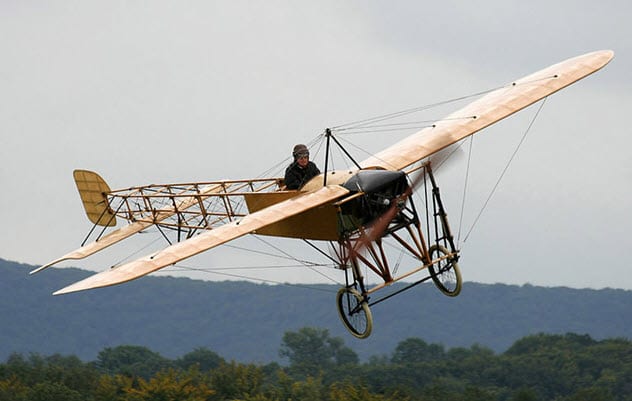
Though ubiquitous today, airplanes weren’t used in warfare until 1911 during the Italo-Turkish War. In that conflict, the Italians flew the Bleriot XI monoplane on a mission to bomb the Turkish camp at Ain Zara, Libya.
As a result, the Bleriot XI became the first airplane used in combat. This primitive aircraft lacked many modern elements that pilots now take for granted, including a canopy and a means of releasing bombs onto a target.[5]
To deliver a bomb, the pilot had to throw the ordnance and hope it hit the target. Although this may seem silly compared to today’s weaponry, many pilots became quite good at delivering bombs weighing as much as 25 kilograms (55 lb).
The first man to do so was Second Lieutenant Giulio Gavotti on November 1, 1911. The word “bomber” had yet to be coined, so the press referred to him as “the flying artilleryman.” Once the concept of using an aircraft in combat was proven possible, the age of aerial combat began. It has continued for over 100 years.
10 Prototype Weapons Too Insane To Use
5 V-2 Rocket
During World War II, the V-2 rocket was developed by the German Army as a “vengeance weapon” to inflict damage on Allied cities and targets in response to Allied bombings of German cities. Wernher von Braun, the designer of the V-2, was a leading figure in the German rocket development program. The V-2 was first used in combat in September 1944.
The rocket vehicle was able to carry a warhead of 1,000 kilograms (2,200 lb). When fully loaded, the V-2 weighed in at a hefty 12,500 kilograms (27,600 lb). It could travel as far as 320 kilometers (200 mi), but it was incredibly expensive and not as reliable or accurate as more conventional artillery.[6]
Although the weapon saw some success, the V-2 holds a place in history as the world’s first long-range guided ballistic missile. It also reshaped the nature of war. Following the V-2’s development, a great deal of time and money was spent by governments across the globe to perfect rocketry for use in the developing space race and future combat operations.
From the V-2, nations developed rockets capable of being fired from submarines, underground bunkers, and the tops of vehicles of all types. Intercontinental ballistic missiles ensured that a first-strike nuclear operation anywhere in the world remained a possibility. And it all began with the V-2.
4 Messerschmitt Me 262
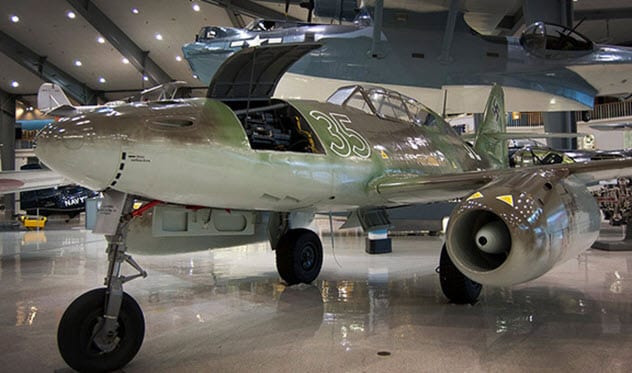
Aircraft design until World War II focused on increasing speed using propeller engines. For decades, these vehicles were more than capable of taking to the skies to kill the enemy, but it wasn’t to last.
Eventually, jet-powered aircraft became the norm. But one early example deserves special mention. The Messerschmitt Me 262, the world’s first operational jet-powered fighter aircraft, transformed the battlefield in the sky.
Much faster and armed more heavily than other World War II fighters, the Me 262 was ahead of its time. Although the aircraft was far from perfect, it shocked and demoralized enemy combatants who encountered it. In addition to the Me 262’s speed, its compact MK cannons could destroy an Allied bomber while staying out of range of enemy fire. Its R4M rockets were no slouch, either—when they fired correctly.
Fortunately, these aircraft didn’t enter into widespread service, so they didn’t have a chance to change the scope of World War II. But they certainly helped to alter the face of aerial battle for every war that followed.[7]
As the war ended, the Allied powers captured a large number of Me 262s as only about 21 percent of the 1,433 produced had gone into operational service. When the Allies got their hands on the airplane, they quickly got to work deconstructing it to copy and improve the design.
Following the war, the models based on the Me 262s included the North American F-86 Sabre, the Boeing B-47 Stratojet, and the MiG-15. After World War II, most nations stopped flying prop planes in combat and shifted to jet power instead. This changed warfare in the air and helped to bring the age of battleships to an end.
3 HMS Dreadnought
At one time, the shape of international naval dominance came from the country that controlled the most battleships. These iron monsters carried some of the most devastating cannons to be outfitted on a naval vessel, and they all got their start after the 1906 commissioning of the HMS Dreadnought for the Royal Navy.
The introduction of the Dreadnought revolutionized naval power such that the word “dreadnought” became associated with the first generation of battleships. These vessels were powerful, heavily armored, and unmatched for most of the 20th century.[8]
The Dreadnought was covered with guns. It had ten 12″ guns, twenty-seven 12-pounder 3” guns, and five 18” torpedo tubes. Various parts of the ship’s hull had armor measuring 7.6–30.5 centimeters (3–12 in) thick. The deck’s armor measured up to 7.6 centimeters (3 in) thick.
Unfortunately, the Dreadnought did not participate in any World War I naval battles because it was being refitted at the time. Still, the vessels inspired by Dreadnought went on to dominate and then support naval operations until 1991.
2 Hosho
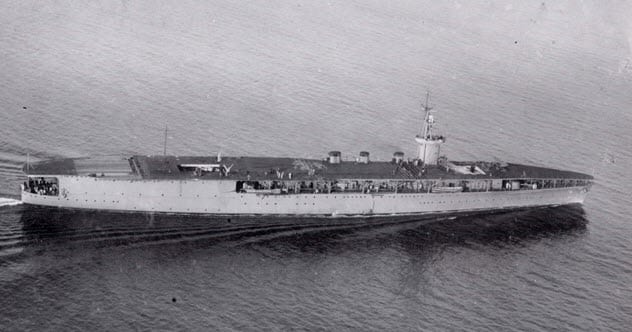
Of all the naval vessels used in warfare, the aircraft carrier had the most significant impact on combat operations during much of the 20th century. Attempts to have fixed-wing aircraft take off from and land on ships began in 1910. But it wasn’t until 1922 that a navy produced an aircraft carrier designed specifically for that purpose.
That vessel was the Hosho, which was commissioned in 1922 for the Imperial Japanese Navy. The ship went on to participate in combat operations during World War II.[9]
The Hosho could carry 15 aircraft and support a crew of 512 people, which is considerably less than a modern carrier. But in 1922, it was incredibly advanced. The Hosho remained in service until 1946 after supporting operations in the battles of Pearl Harbor and Midway.
After the war, all improved carrier designs built upon the success of the Hosho. Modern navies are structured around carrier strike groups, which enable a fleet to provide forward support and combat operations anywhere in the world.
1 MQ-1 Predator
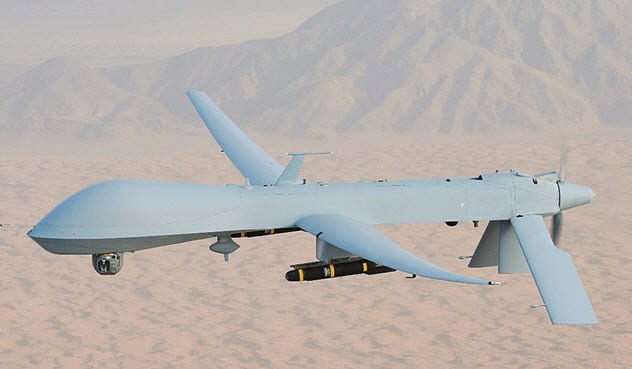
The General Atomics MQ-1 Predator entered the battlespaces of US combat in July 1995. Although it wasn’t the first drone used in warfare, it was the first aerial reconnaissance aircraft to be widely deployed in support of US military operations around the globe.
The MQ-1 could be controlled from anywhere in the world for up to 26 hours at a time, which took pilots away from dangerous airspace while significantly extending their operating time. This drastically reduced the manufacturing and operational costs for each system, which enabled the US to put 360 of them into service over a 25-year period.[10]
While the Predator has been an excellent reconnaissance aircraft, the real innovation came when the United States Air Force opted to add Hellfire missiles to its payload. The newly dubbed MQ-1A could fire missiles at targets outside visual and auditory range, which made it an effective killing machine.
Since the addition of weapons in 2001, the Predator has completely reshaped the battlespace, making it possible to safely engage targets anywhere in the world. But it hasn’t been without controversy. The MQ-1 left service in 2018 as newer, deadlier aircraft took its place.
10 Weird Realities Of Aerial Combat In World War I
About The Author: Jonathan is a graphic artist, illustrator, and writer. He is a Retired Soldier and enjoys researching and writing about history, science, theology, and many other subjects.
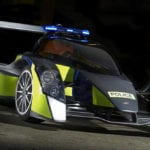



![Top 10 Haunting Images Of Historic Tragedies [DISTURBING] Top 10 Haunting Images Of Historic Tragedies [DISTURBING]](https://listverse.com/wp-content/uploads/2020/05/33758v-150x150.jpg)



